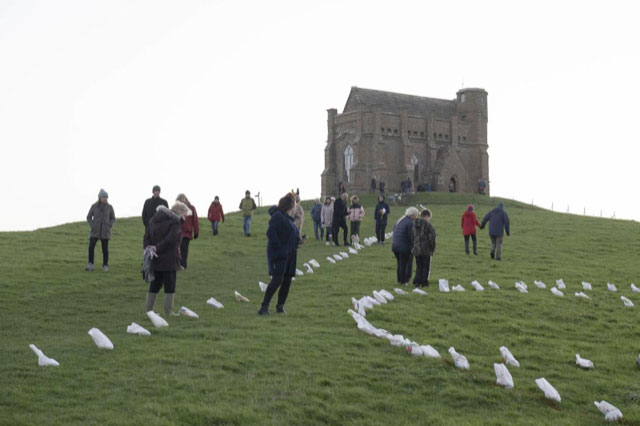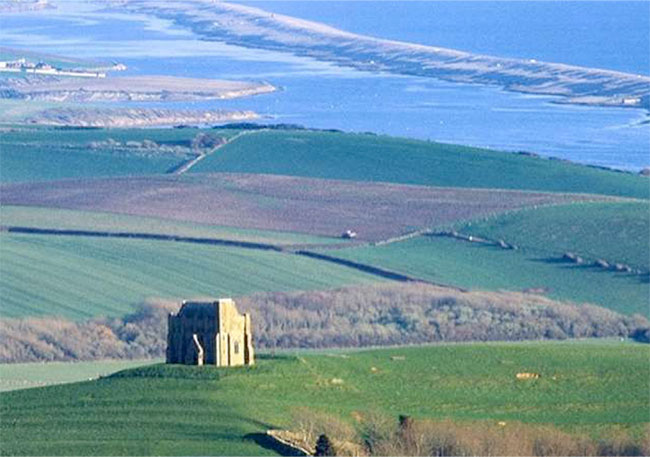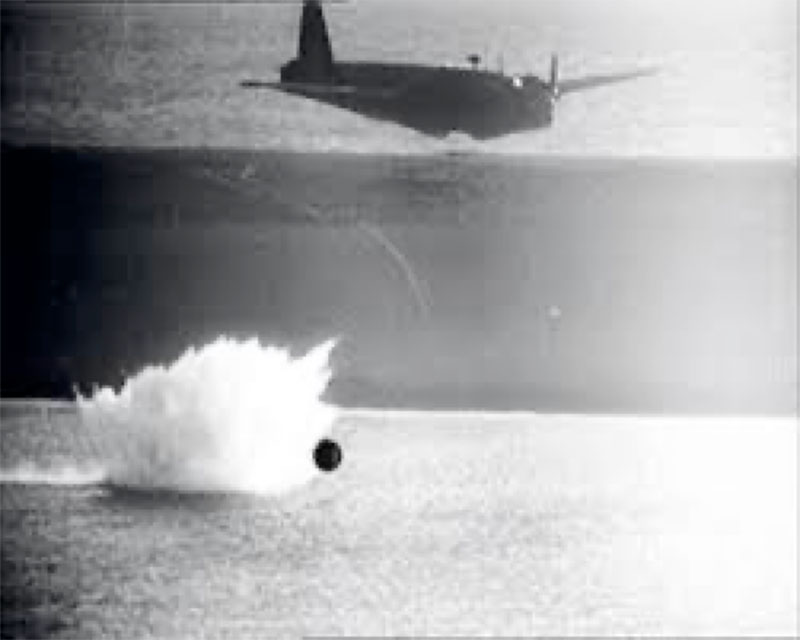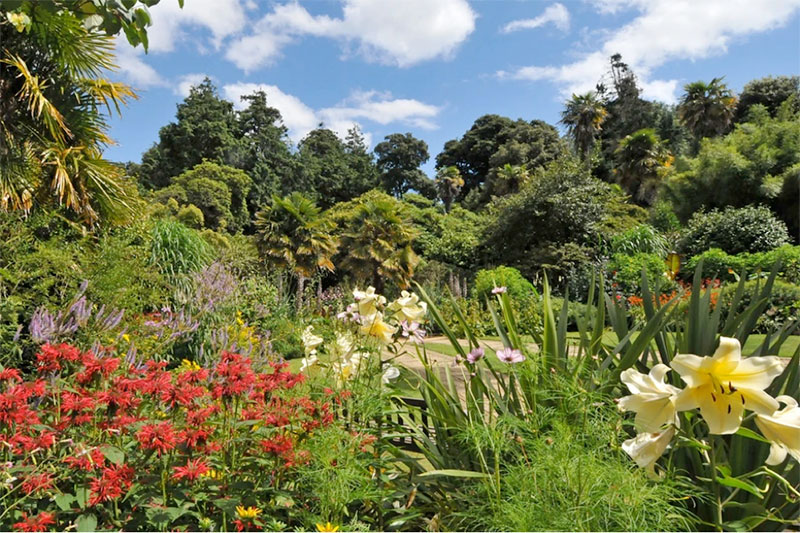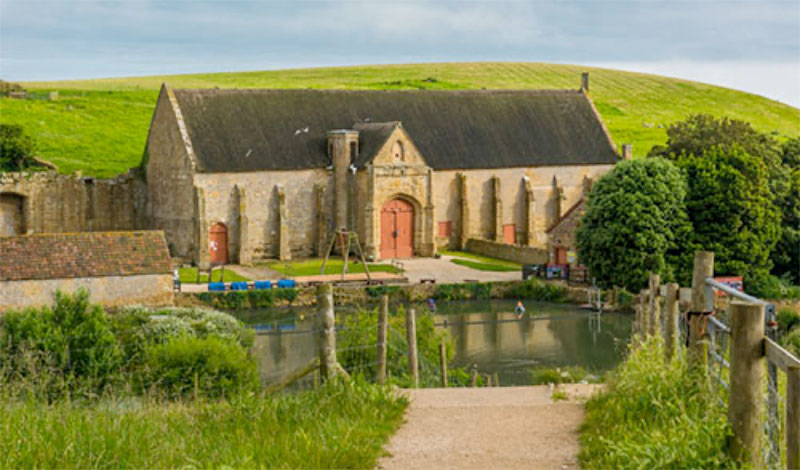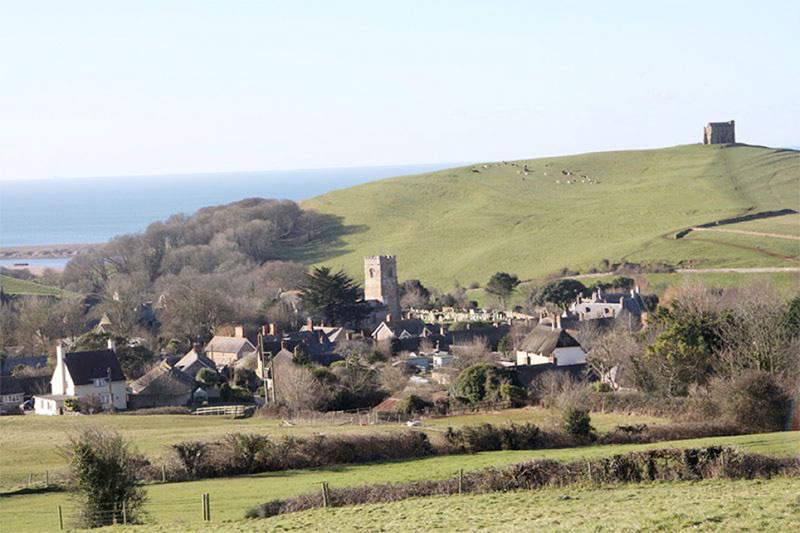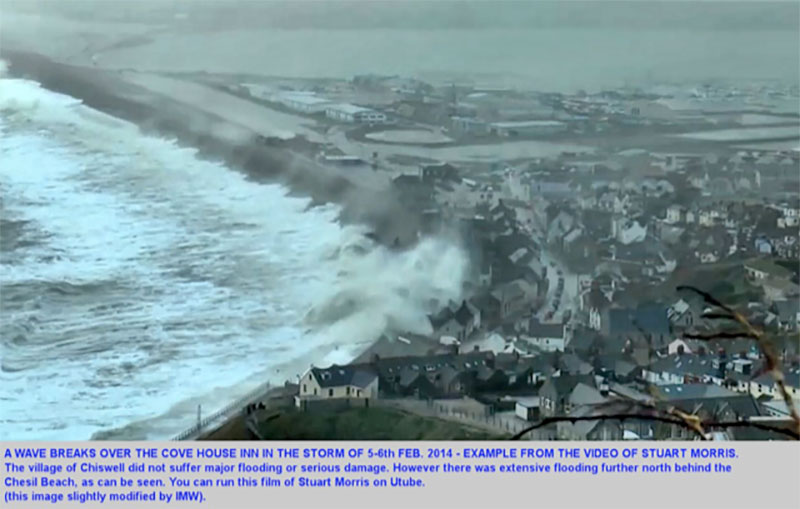Abbotsbury project for very Young Artists
Click on images to enlarge.
St. Catherine’s Chapel, was some say, built by the monks, to hold a finger of St. Catherine. The Chapel was visited by pilgrims, who used to pray to the Saint, St.Catherine, believing that her finger, a piece of the Saint, was a link to God.
The Chapel on the hill overlooking the sea, was a beacon for ships, a fixed point and a warning in storms and rough seas.
The Lagoon, being dead straight for 8 miles, was used in the world war for the Dam Buster Lancaster Bombers to test their bombs bouncing along the water, bouncing on the water like skimming flat pebbles.
The biggest Swannery in Europe, where hundreds of swans their make nests and bring up their signets.
The Sub-Tropical Garden is a special place containing exotic plants and trees from all over the world where scholars can study these unusual natural things. The exotic plants benefit from Abbotsbury’s mild coastal weather.
The biggest Thatched Barn in the world where the medieval farmers would bring their harvested crops as offerings to the Abbey landlords.

